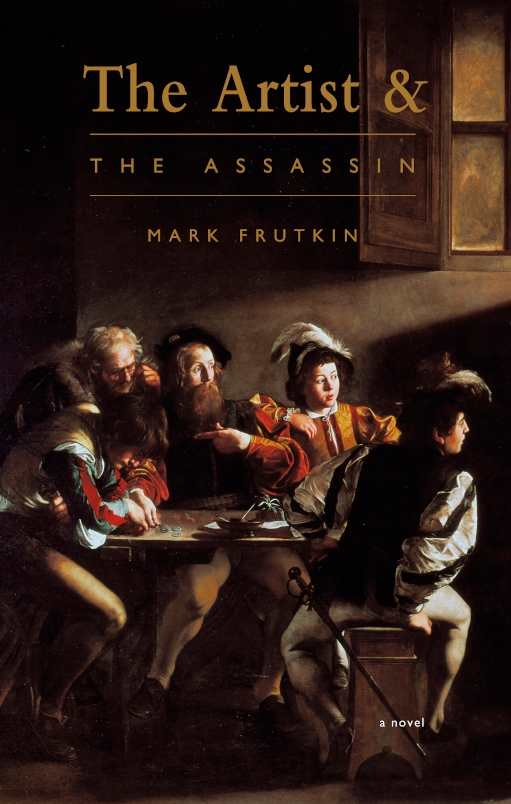
The Artist and the Assassin
A revolutionary Italian artist living in a corrupt, brutal era is the focus of the historical novel The Artist and the Assassin.
In Mark Frutkin’s historical novel, an assassin is hired to kill a celebrated Italian Renaissance artist.
As a child, Caravaggio exhibited a brilliant eye for color and a prodigious talent for painting. Thus, his uncle sent him to apprentice with an established artist in Milan. But Caravaggio fast grew bored of painting still lifes; he felt stifled by rules around color and composition. His own style was radical, playing with light and dark to create intense, visionary images.
Though Caravaggio’s relationship with his mentor deteriorated, he gained the patronage of a wealthy cardinal in Rome, who brought Caravaggio to live in his palazzo. There, Caravaggio painted The Calling of St. Matthew—and met Luca, an indigent, impoverished assassin who became his model and muse.
He also fell in love with a prostitute.
The novel follows these developments with care, revealing Caravaggio as a man with a volatile temper who carried a rapier—foreshadowing how, in a fit of jealousy over the prostitute, he killed the son of a powerful Roman man. Though he was banished from Rome for the murder, he struggled to return to the city. Meanwhile, the father of the murdered man hired Luca to assassinate the artist, bringing Luca into Caravaggio’s life for a second time.
Alternating between its removed focus on Caravaggio and its direct narration by Luca, the novel develops the artist’s story from the time when he was eleven, through to his arrival in Rome, his various commissions, and his rise to fame. It highlights his infamy following his so-called heretical presentations of biblical stories, too.
Luca’s narration is more dramatic, detailing his involvement with the artist both in terms of his struggles as model, and as Caravaggio’s predator. Tension builds as Luca pursues Caravaggio from Rome to Naples, trading focus between palazzos and houses of prostitution, and moving from the land to the sea.
Though it is committed to historical accuracy, the prose is often poetic, resulting in a clear sense of the mindsets of the artist and his would-be assassin. And the squalor and splendor of Italy in the 1600s are juxtaposed to great effect: Caravaggio’s life is described in all its glory and tawdriness, while Luca’s is captured in terms of filth and extreme want. What emerges is an affecting portrayal of seventeenth century Italy that contrasts darkness and light in much the same way that Caravaggio’s paintings themselves did. Charming but anachronistic nineteenth century engravings appear throughout the book to complement the tale.
The Artist & The Assassin is a dramatic historical novel about the life of a troubled, groundbreaking artist.
Reviewed by
Randi Hacker
Disclosure: This article is not an endorsement, but a review. The publisher of this book provided free copies of the book and paid a small fee to have their book reviewed by a professional reviewer. Foreword Reviews and Clarion Reviews make no guarantee that the publisher will receive a positive review. Foreword Magazine, Inc. is disclosing this in accordance with the Federal Trade Commission’s 16 CFR, Part 255.
